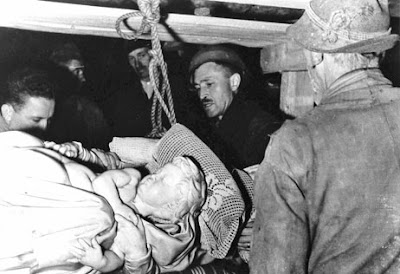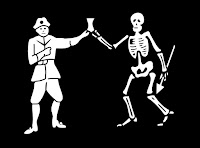November 30, 2020
Today’s sermon “Ready or Not, Here I Come,”is from the Crawfordville Pulpit, preached on the first Sunday of Advent, November 29, 2020.
The blog today features our regularly monthly history recap. And the updated Quarantine Blog Index is now online.
👉 On November 1, 1512, the ceiling of the Sistine Chapel in Rome, one of Italian artist Michelangelo’s finest works, was exhibited to the public for the first time. Michelangelo’s epic ceiling frescoes, which took 4 years to complete, feature nine panels devoted to biblical world history. The most famous of these is The Creation of Adam, a painting in which the arms of God and Adam are stretching toward each other.
Personal note: If you have the privilege of visiting the Sistine Chapel, you will be required to walk near the outside walls, not stopping except for a quick gaze up. If you want to observe a particular part of the ceiling, or just take some photographs, you are required to move into the center of the room (and there is a velvet rope barrier separating the two spaces). Bonnie and I were blessed to be there one Easter weekend, and when the guard asked us to step into the center, I looked up, and I was standing directly under those two outstretched hands. Powerful moment!
👉 The Hughes Flying Boat – at one time the largest aircraft ever built – was piloted by designer Howard Hughes on its first and only flight on November 2, 1947. Built with laminated birch and spruce, and nicknamed the “Spruce Goose,” the massive aircraft had a wingspan longer than a football field and was designed to carry more than 700 men to battle. Following the U.S. entrance into World War II in 1941, the U.S. government commissioned the Hughes Aircraft Company to build a large flying boat capable of carrying men and materials over long distances. Development of the Spruce Goose took so long that the war had ended by the time of its completion.
👉 One World Trade Center officially opened on November 3, 2014. The new tower, along with the rest of the World Trade Center complex, replaced the Twin Towers and surrounding complex, which were destroyed by terrorist attacks on September 11, 2001.
👉 On November 4, 1922, British archaeologist Howard Carter and his workmen discover a step leading to the tomb of King Tutankhamen in Egypt’s Valley of the Kings. 22 days later Carter and fellow archaeologist Lord Carnarvon entered the interior chambers of the tomb, finding them miraculously intact. The most splendid find was a stone sarcophagus containing three coffins nested within each other. Inside the final coffin, which was made out of solid gold, was the mummy of the boy-king Tutankhamen, preserved for more than 3,000 years.
👉 Led by Bolshevik Party leader Vladimir Lenin, revolutionaries launch a coup d’état against Russia’s Provisional Government on November 6, 1917. The Bolsheviks and their allies occupied strategic locations in the Russian capital of Petrograd (now St. Petersburg) and within two days had formed a new government with Lenin as its head. Bolshevik Russia, later renamed the Union of Soviet Socialist Republics (USSR), was the world’s first Marxist state.
👉 On November 7, 1944, President Franklin Delano Roosevelt was elected – 432 electoral votes to 99 for Thomas Dewey – to an unprecedented fourth term in office. The 22nd Amendment to the U.S. Constitution, ratified on February 27, 1951, insures that FDR will be the only president to serve more than two elected terms. The amendment prohibits anyone who has been elected president twice from being elected again. Under the amendment, someone who fills an unexpired presidential term lasting more than two years is also prohibited from being elected president more than once.
👉 On November 10, 1969, “Sesame Street” made its broadcast debut. “Sesame Street,” with its memorable theme song (“Can you tell me how to get/How to get to Sesame Street”), went on to become the most widely viewed children’s program in the world. It has aired in more than 120 countries.
👉 Moby-Dick is now considered a great classic of American literature and contains one of the most famous opening lines in fiction: “Call me Ishmael.” Initially, the book about Captain Ahab and his quest to catch a giant white whale was a flop when it was released on November 14, 1851. Melville died in 1891, largely forgotten by the literary world. By the 1920s, scholars had rediscovered his work, particularly Moby-Dick, which would eventually become a staple of high school reading lists across the United States.
👉 Microsoft released the Xbox gaming console on November 15, 2001, dramatically influencing the history of consumer entertainment technology. Microsoft CEO Bill Gates decided to venture into the video game market because he feared that gaming consoles would soon compete with personal computers. At the time, Japanese companies Sony and Nintendo dominated the field, and no American company had challenged them since Atari ceased selling its Jaguar console in 1996. Microsoft is said to have lost $4 billion on the initial Xbox, but its successors have sold over a hundred million units.
👉 On November 18, 1978, Peoples Temple founder Jim Jones lead hundreds of his followers in a mass murder-suicide at their agricultural commune in the South American nation of Guyana. Started in 1974, Jonestown never became the utopia that was promised. Charges of cruelty and virtual slavery began to leak out and Congressman Leo Ryan came to investigate. Jones, addicted to drugs and increasingly paranoid, ordered Ryan and his party murdered, then directed his followers to commit suicide. Many of Jones’ followers willingly ingested a poison-laced punch while others were forced to do so at gunpoint. The final death toll at Jonestown that day was 909; a third of those who perished were children.
👉 On November 19, 1863, at the dedication of a military cemetery at Gettysburg, Pennsylvania, during the American Civil War, President Abraham Lincoln delivered one of the most memorable speeches in American history. Charged by Pennsylvania’s governor, Andrew Curtin, to care for the Gettysburg dead, an attorney named David Wills bought 17 acres of pasture to turn into a cemetery for the more than 7,500 who fell in battle. Lincoln’s address lasted just three minutes. In fewer than 275 words, Lincoln brilliantly and movingly reminded a war-weary public why the Union had to fight, and win, the Civil War.
👉 On the Origin of Species by Means of Natural Selection, by British naturalist Charles Darwin, was published on November 24, 1859. Darwin’s theory argued that organisms gradually evolve through a process he called “natural selection.” Darwin acquired most of the evidence for his theory during a five-year surveying expedition aboard the HMS Beagle in the 1830s.
👉 “The Mousetrap,” a murder-mystery written by the novelist and playwright Agatha Christie, opened at the Ambassadors Theatre in London on November 25, 1952. The drama is played out at “Monkswell Manor,” whose hosts and guests are snowed in among radio reports of a murderer on the loose. A detective shows up on skis with the terrifying news that the murderer, and probably the next victim, are likely both among their number. At every curtain call, the individual who has been revealed as the murderer steps forward and tells the audience that they are “partners in crime” and should “keep the secret of the mystery locked in their heart.” Christie’s whodunit would go on to become the longest continuously running play in history, running continuously until March 16, 2020, when the stage performances had to be discontinued due to the COVID-19 pandemic.
👉 On November 26, 1942, Casablanca, – my personal vote for best motion picture of all time – a World War II-era drama starring Humphrey Bogart and Ingrid Bergman, premiered in New York City. Bogart played Rick Blaine, the owner of a swanky North African nightclub, who is reunited with the beautiful, enigmatic Ilsa Lund (Bergman), the woman who loved and left him. Casablanca was nominated for eight Academy Awards, including Best Actor for Bogart. It took home three Oscars, for Best Picture, Best Director and Best Adapted Screenplay. The film featured a number of now-iconic quotes, including Rick’s line to Ilsa: “Here’s looking at you, kid,” as well as “Round up the usual suspects,” “Louis, I think this is the beginning of a beautiful friendship” and “Of all the gin joints in all the towns in all the world, she walks into mine.” And in one of the best scenes from a great movie, Sam (Dooley Wilson) plays and sings, “As Time Goes By.”
👉 The first Monday of Advent.
Outrageous God
“For I am about to create new heavens and a new earth; the former things shall not be remembered or come to mind. But be glad and rejoice forever in what I am creating; for I am about to create Jerusalem as a joy, and its people as a delight. I will rejoice in Jerusalem, and delight in my people; no more shall the sound of weeping be heard in it, or the cry of distress” (Isaiah 65:17-19).
God speaks: “New heaven, new earth, new Jerusalem.” Heaven and earth will rejoice because in that new world wrought by God, there will be no more the sound of weeping, no more homeless folks to moan, no more broken folk to whimper, no more terrorized folk to cry out.
Heaven and earth will rejoice, because in that new world wrought by God there will be no more infant mortality, no more infants who live but a few days, and no more old people who will die too young or live too feebly or continue as a shell while the life is gone.
Heaven and earth will rejoice, because when the newness comes, every person will live safely under a vine and fig tree, safe, unafraid, at peace, with no more destructive threats or competitive anxieties.
Heaven and earth will rejoice, because in that new world wrought by God, God will be like a mother who hears and answers in the night, knowing before we call who is needed and what is needed. And we shall never be left alone again.
Isaiah’s poem is outrageous. The new world of God is beyond our capacity and even beyond our imagination. It does not seem possible. In Advent, however, we receive the power of God that lies beyond us. This power is the antidote to our fatigue and cynicism. It is the gospel resolution to our spent self-sufficiency, when we are at the edge of our coping. It is the good news that will overmatch our cynicism that imagines there is no new thing that can enter our world.
Outrageous God, outflank our weary Christmas with the Advent miracle of a power that lies beyond us. May we receive this power, this new vision, which would set us free to live boldly into your dream for the world. Amen.
-30-





















































